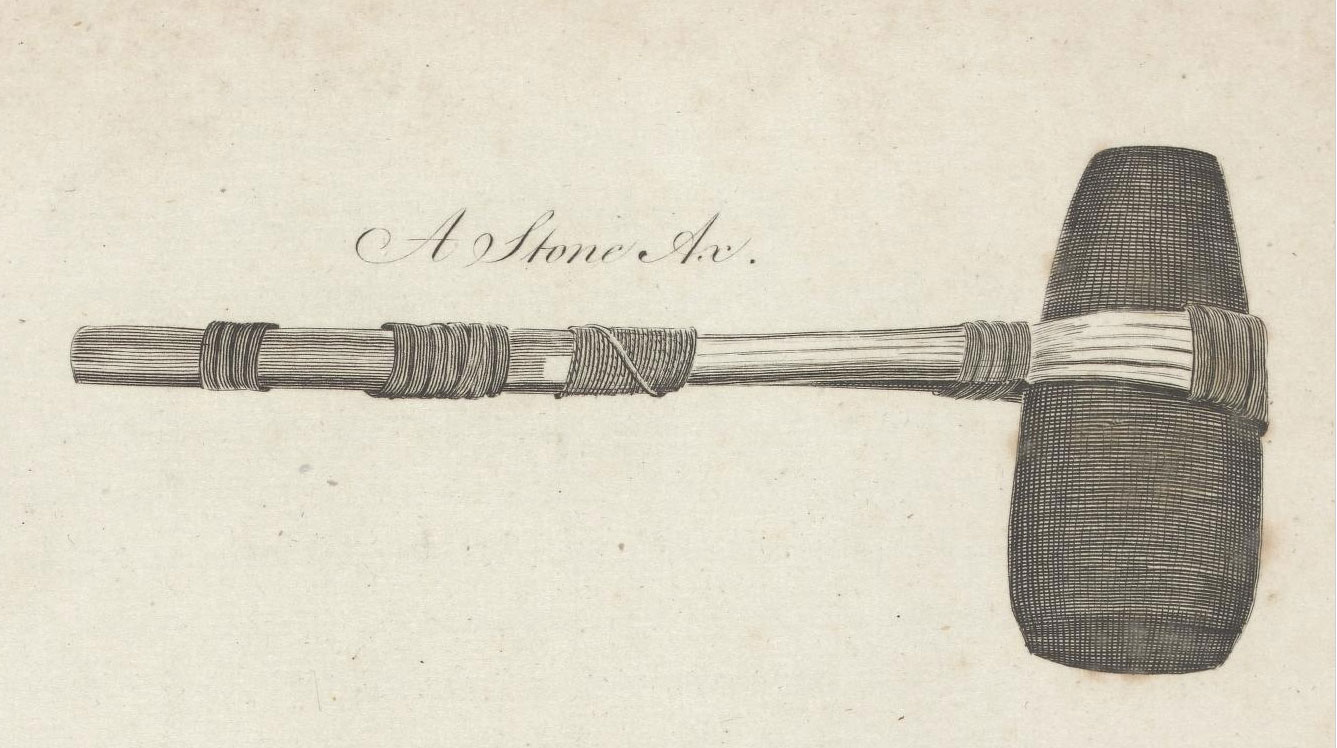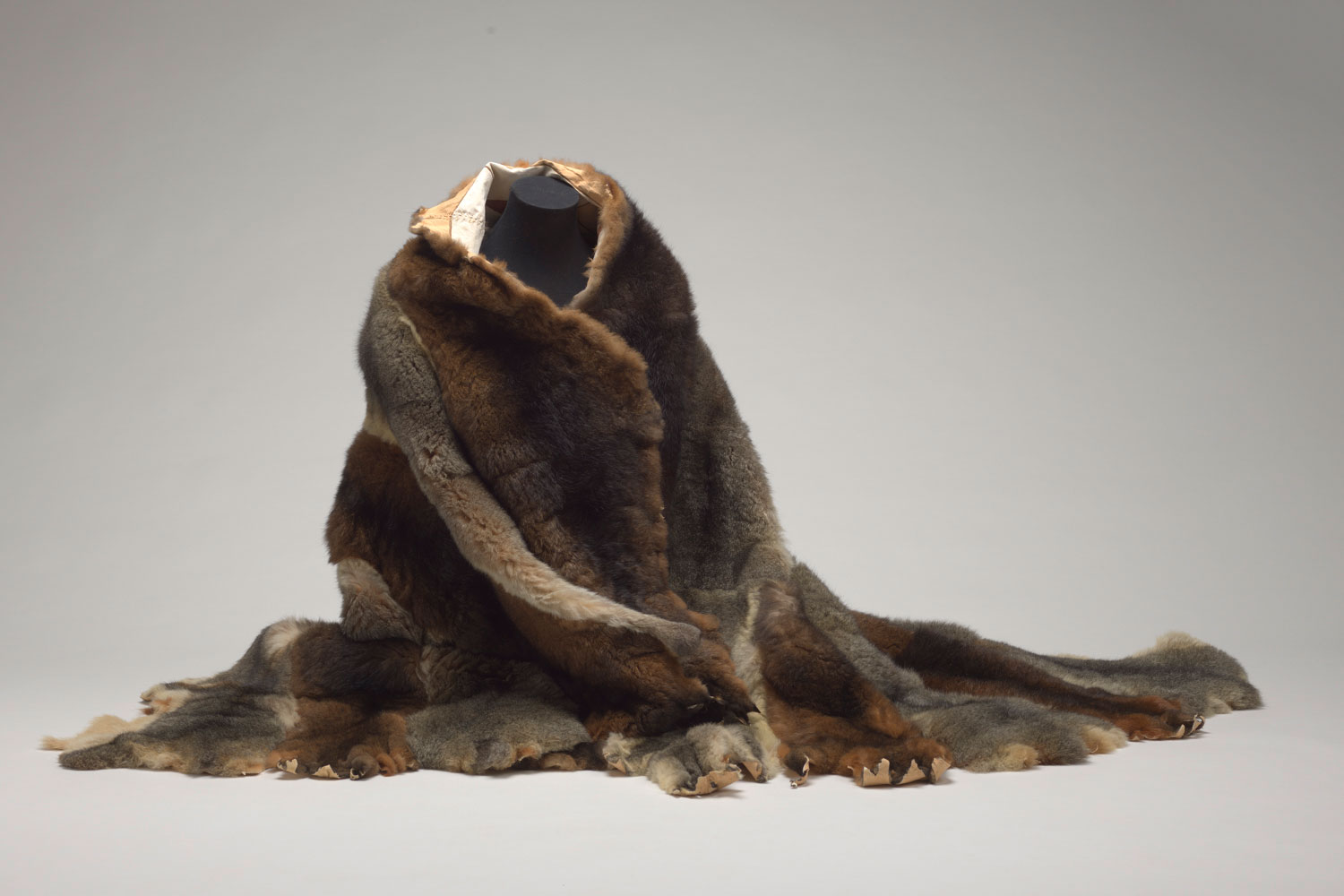The following descriptions of the tools we used are accurate to pre-colonisation. While we still use many of these tools today the creation process may be different as we have access to modern day technology, and some may be more for show than practical use.
Spears
We would typically make our spears from the Burgan tree (Ti-Tree). We would find a suitable stem that was straight and would cut the stem back with stone scrapers. We would then straighten it out even more over a fire to get the perfect shape we wanted. Spears were generally larger and could reach lengths of about 3 metres and were used alongside a garrik (throwing stick).
Wonguims (boomerangs)
Wonguims were made from the roots and limbs of trees that resembled the shape that was needed for the finished product. We generally made our wonguims from wattle trees that were common in the area. Wonguims would take many hours to perfect and would be heated over a fire to create a twist so they could return when thrown.


Axes made from greenstone were used to cut tree bark for making canoes or tarnuks. Image Source: Victorian Collections
Axes
Both men and women carried an axe on them at all times – it was their most prized possession. It had a variety of uses, the men could use it as a weapon and the women would use it to strip bark for their family's willam. The stone axe would be made using greenstone from the MT William quarry and was considered the strongest and best stone in the south east. Handles would be fitted to the stone with sinew and gum.
Clubs
To make our clubs we would use heavier woods such as ironbark or red gum. We used our clubs in hunting and fighting.
Tarnuk/Coolamon
Tarnuks were made from the burls of trees, we usually found these burls on gum trees. The burl would be removed with a stone axe and hollowed out and the bottom would be coated in clay to ensure the water did not seep in to the wood or leak out.
Konnung/Kannan (digging stick)
Our women used these to dig the roots from the ground and as a weapon to protect themselves and their children if it was necessary.


Image Source: AIATSIS, A Possum Skin Cloak
Cloaks
The most common form of cloak was a possum skin cloak. To make a cloak we would need 40 possum pelts and our women would sew them together using the sinew from the kangaroo tail. We would also use kangaroo skins to make cloaks.
Clapsticks
Clap sticks were used by both men and women and were carved individual pieces of wood or sometimes a wonguim and a garrik would be hit together for the same effect. The clap sticks would be used to keep the beat for ceremony and dance.
Drums
We would often used drums in ceremony. The drums were made with possum skin pelts that we wrapped tightly around our legs or a piece of wood and we would strike the pelt with the palms of our hands.
Binak (Baskets)
We had many types of baskets. There were disposable ones made to carry and cook murnong while others were continuously used and were made more carefully. We would use the stronger baskets to transport important materials between camps. Often these baskets were made from Lomandra and the spiny-headed mat-rush. Our women were considered to be expert makers of baskets by surrounding mobs.
Nets
Nets were frequently used in hunting. Duck nets were extremely common and would reach lengths of 30 metres. They would be placed along rivers between trees and raised when a flock of ducks would come by effectively trapping them. To prevent the ducks from flying above our hunters would make hawk calls and they would fly low closer to the water.


Two men in possum skin cloaks paddle a red gum bark canoe on the Yarra River. Photograph by Fred Kruger, c. 1870. Image source: National Gallery of Victoria
Canoes
Canoes could be made rather quickly from bark off of trees. The best trees were red gums and yellow and red-box trees with a slight bend. The shape would be drawn on the tree with charcoal and cut out with a stone axe. They were typically made to hold a family of four.
Ochre
Ochre was frequently used in ceremony, song and dance as well as used to decorate weapons and clothing. There were three main types of ochre used, brown, red and white (pipe clay). We would also use charcoal and would make it into a paste for a black colour.
